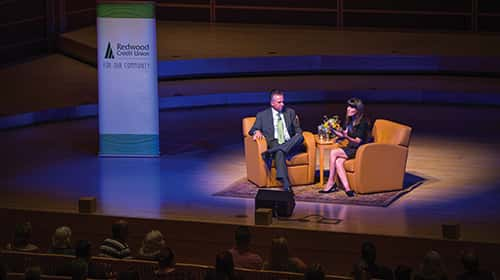 Giving back to their communities is an important part of the work culture at many North Bay companies. Formal giving committees, mentoring programs and widespread participation in Human Race events and other fundraisers make sizable impacts in the meager budgets of many local nonprofits and charities. Being a socially responsible employer also engages employees––and attracts new ones––as managers from the top down set examples of volunteerism for the entire staff.
Giving back to their communities is an important part of the work culture at many North Bay companies. Formal giving committees, mentoring programs and widespread participation in Human Race events and other fundraisers make sizable impacts in the meager budgets of many local nonprofits and charities. Being a socially responsible employer also engages employees––and attracts new ones––as managers from the top down set examples of volunteerism for the entire staff.
“To be an officer at Exchange Bank, you’re expected to play a leadership role in the community,” says Lori Zaret, senior vice president of human resources for the Sonoma County-based bank. “Most of our officers serve on the boards of nonprofits and contribute in many other ways. If you are going to be a leader in this bank, you also need to be a leader in the community.” Zaret herself donates HR consulting services to the Ceres Community Project, a nonprofit that prepares healthy meals for home delivery to low-income people struggling with serious illness (see Work/Life/People).
It would be difficult to find anyone among the bank’s 400 employees who doesn’t volunteer, she says. “I’d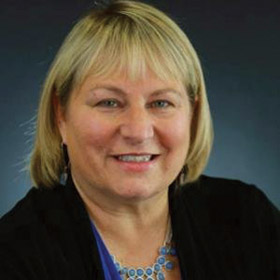 be very surprised if there’s an employee who isn’t contributing in some way at any one time, from making a simple donation to his or her favorite charity to baking cookies for a sale to raise money for another good cause. Helping the community is just part of our DNA. It’s who we are. Giving back makes our employees feel connected to their communities.”
be very surprised if there’s an employee who isn’t contributing in some way at any one time, from making a simple donation to his or her favorite charity to baking cookies for a sale to raise money for another good cause. Helping the community is just part of our DNA. It’s who we are. Giving back makes our employees feel connected to their communities.”
But Exchange Bank doesn’t monitor how often its employees volunteer, Zaret adds. “We don’t keep track because we don’t limit their participation. Not a day goes by that they aren’t raising money for a worthy cause.”
A sense of accomplishment
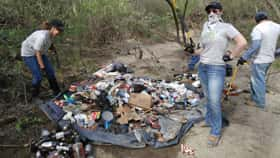 In 2015, Sonoma County-based Jackson Family Wines formalized an employee volunteer program, calling it Rooted for Good. “We’ve always had employees who took time to volunteer in the community,” explains Katie Jackson, vice president of sustainability and external affairs for JFW. “We didn’t track their volunteering activities before launching Rooted for Good, but historically they’re huge supporters of local nonprofits. We saw they were doing so much volunteering on their own time—and the members of the Jackson family were, too—so Rooted for Good was developed as a way to bridge the interests of both so they complement each other.”
In 2015, Sonoma County-based Jackson Family Wines formalized an employee volunteer program, calling it Rooted for Good. “We’ve always had employees who took time to volunteer in the community,” explains Katie Jackson, vice president of sustainability and external affairs for JFW. “We didn’t track their volunteering activities before launching Rooted for Good, but historically they’re huge supporters of local nonprofits. We saw they were doing so much volunteering on their own time—and the members of the Jackson family were, too—so Rooted for Good was developed as a way to bridge the interests of both so they complement each other.”
In the first year of implementing Rooted for Good, JFW strived for 30 percent participation among its 1,500 employees company-wide– (800 of which live and work in the North Bay). “Instead, we far exceeded our goal, with more than 50 percent of employees involved in 26 company-sponsored volunteer events for a total of 4,320 volunteer hours,” says Jackson. “With this program, we give two paid days for full-time employees to volunteer––one day for a companywide volunteer effort and one day for individual departments to volunteer. Getting paid is a good motivator and may have encouraged some employees who hadn’t been active in volunteering before. It’s very empowering and they enjoy a sense of accomplishment.”
Giving back sometimes means getting dirty. Last year, Jackson was one of 40 JFW staff members who worked with the Russian Riverkeepers organization to clean up trash along the river. “We picked up about 4,000 pounds of garbage at an abandoned homeless encampment outside of Healdsburg,” she says. “It was a lot of hard work and really messy, but it felt great for our group to achieve that.”
Going forward, Jackson Family Wines has set a five-year goal to increase employee volunteerism to 75 percent. “We place a strong emphasis on this so that we can continue to support our communities and drive even more impact toward social good each year,” says Jackson. “We give to more than 50 nonprofits annually, in all six counties in California where our employees live and work, and also at our property in Oregon. Giving back and helping others is really crucial to our sustainability, because there’s a need in every community where we have wineries and vineyards.”
Awards and rewards
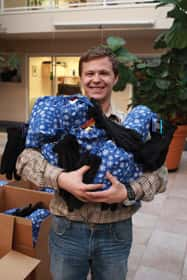 Redwood Credit Union, with 18 branches (15 in the North Bay, two in Mendocino County and one in San Francisco), encourages employee volunteerism among its 500 employees, board and supervisory committee members, and supports it with an in-house recognition, including a Community Heart Award and a Pulse Award presented at all-staff meetings.
Redwood Credit Union, with 18 branches (15 in the North Bay, two in Mendocino County and one in San Francisco), encourages employee volunteerism among its 500 employees, board and supervisory committee members, and supports it with an in-house recognition, including a Community Heart Award and a Pulse Award presented at all-staff meetings.
“We appreciate and recognize everyone in our organization who gives back to our community. Our Community Heart and Pulse Awards recognize those who provide leadership or contribute in special ways when serving and giving back to our communities,” says Robin McKenzie, senior vice president of marketing and communications for RCU. “Our staff stays informed about volunteer opportunities through our Community Department, which sends out regular updates on where help is needed. There are always a ton of options, so every employee can find an opportunity that fits their schedule.”
Funds donated or generated from RCU volunteer activities companywide in 2015 totaled approximately $4 million and represented 3,800 volunteer hours. A few examples of RCU’s 2016 employee commitment to the community includes RCU’s United Way workplace giving campaign, which raised more than $105,000; its three-county participation in the Human Race, in which more than 115 employees ran or walked in support of 32 nonprofits (raising more than $25,000); and its work to help victims of Lake County wildfires, which raised more than $2.5 million for victims of the 2015 fires, and more than $263,000 for victims of the 2016 Clayton fire.
“Each year, we go out into the community and perform a random act of kindness, such as buying a cup of coffee or a meal for someone unexpectedly,” says McKenzie. “Funds are provided to help us achieve that, and there’s 100 percent employee, board and supervisory committee participation. Everyone has the opportunity to make a meaningful connection with someone.”
Rewarding employees who go above and beyond in volunteering is also a hallmark of Novato-based W.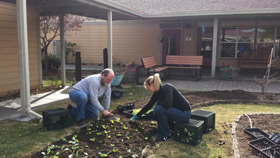 Bradley Electric, a commercial electrical contracting company with 275 employees. It presents a “Humanitarian Award” to a staff member that excels in giving his or her own time to the community, not necessarily pre-sanctioned as part of the company’s giving plans. WBE itself won the 2015 Heart of Marin Award for Corporate Community Service presented by the Center for Volunteer and Nonprofit Leadership (see “Helping Hands,”).
Bradley Electric, a commercial electrical contracting company with 275 employees. It presents a “Humanitarian Award” to a staff member that excels in giving his or her own time to the community, not necessarily pre-sanctioned as part of the company’s giving plans. WBE itself won the 2015 Heart of Marin Award for Corporate Community Service presented by the Center for Volunteer and Nonprofit Leadership (see “Helping Hands,”).
Kevin Bradley, vice president of business development for WBE, says the company of about 75 employees tends to work with nonprofits with a formal volunteering program in place, he adds, such as the Boys & Girls Club of Marin and Petaluma, the North Bay Children’s Center and Marin Food Bank.
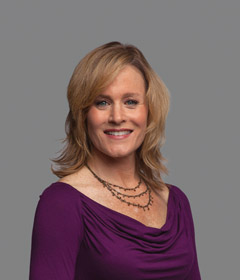 At the children’s center, WBE employees helped maintain the extensive gardens. They also routinely sort food and organize the Food Bank warehouse, and several employees recently rolled up their sleeves to work on the Habitat for Humanity project in Novato. “By working with these agencies and others, we can offer flexibility for our employees’ time of day and time of year to volunteer,” he says. “They get paid while volunteering, because it’s usually part of their day on company time.”
At the children’s center, WBE employees helped maintain the extensive gardens. They also routinely sort food and organize the Food Bank warehouse, and several employees recently rolled up their sleeves to work on the Habitat for Humanity project in Novato. “By working with these agencies and others, we can offer flexibility for our employees’ time of day and time of year to volunteer,” he says. “They get paid while volunteering, because it’s usually part of their day on company time.”
WBE initiated a Giving Committee several years ago with a budget of tens of thousands of dollars to help nonprofits. “The committee picks the organizations to assist and makes the donations,” says Bradley. “In 2015, we donated a total of $219,000 to nonprofits, and we expect to best that amount by 12 or 13 percent in 2016. Our employee volunteering has blossomed into a much more organized and philanthropic endeavor in recent years, thanks to the efforts of our CEO, Leslie Murphy.”
The company’s Random Acts of Kindness Committee creates spur-of-the-moment ways for employees to volunteer and donate. Every month, the employees on the committee select individuals and organizations to surprise with unexpected gifts. Past efforts have included giving snacks to firefighters and police officers, presenting contributions to an animal shelter to aid with pet adoptions and putting together backpacks filled with supplies to hand out to schoolchildren.
Size doesn’t matter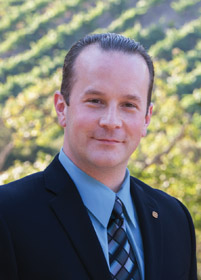
Companies with a smaller employee base can make big impacts, too. Kiosk, a full-service marketing and advertising agency with 36 employees in Novato, donates at least 10 percent of its billable hours (more than 7,500 hours in 2016) and 10 percent of company profits each year to its charities of choice. The company chooses a charity based on employee nominations of those they wish to support. “By doing that, we can tie company social events to charitable fundraising, thereby forming a strong connection between having fun and doing good work for others,” says Susi Lynam, Kiosk’s vice president of operations and human resources.
Lynam explains there are two aspects to Kiosk’s charity work––fundraising and volunteering time, particularly to local agencies such as Homeward Bound of Novato, a primary provider of homeless shelters and services in Marin County. Kiosk employees have donated many hours working in the nonprofit’s gardens, where produce is grown for the residents, and also recently helped assemble furniture and prepare for opening day of Oma Village, a Homeward Bound housing project for families leaving homelessness. Kiosk also puts a team together to participate in the Marin Human Race and to help raise money for charity, collecting at least $1,500 every year for the cause.
Inside the Kiosk office, some of the fundraising events include dress-up days, when employees are encouraged to wear costumes or apparel that capture a certain light-hearted or seasonal theme, such as Big Hair Day, Western Day, ’80s Day and Halloween. Kiosk donates $25 for each staffer who participates. “At the end of the day we tally up how many people dressed up and the total is given to the charity we’re supporting that year. It’s an easy and fun way for the staff to raise funds, which can total hundreds of dollars, in a single day,” says Lynam.
It takes a village
Despite having only 18 employees among its three branches in Napa Valley, Mechanics Bank won CVNL’s Heart of Napa Award for Corporate Community Service last year. “I don’t believe we won because of the dollars we contributed but because of our absolutely genuine approach to partnering with local nonprofit agencies,” explains Tracy Calkins, Napa Valley area manager for Mechanics Bank. He credits a long-standing relationship with the Napa Valley Coalition of Nonprofit Agencies for focusing the bank’s volunteer work, much of it handled behind the scenes.
“It was through the coalition that I heard about many of the aches and pains and challenges faced by our local nonprofits,” he says. “For us, it’s not just showing up and volunteering at their events. It’s going a step farther by looking at their event budgets and helping them with their line items to find ways to cut the expenses. We take a holistic approach by asking, ‘What do you need?’ Sometimes they’re shocked by that approach.
“Although we may not always be able to write the size of check they’d like, we pride ourselves on taking the additional steps to support not only their finance and banking needs but confirming how we might partner them with others who can help,” he continues. “Sometimes it takes a village.”
The bank supports about 40 events annually in Napa Valley that it sponsors, donates to or contributes to in some way, and pays employees for up to 12 hours per year to volunteer locally. Bank employees supported 26 community-based organizations in 2015 by contributing more than 1,626 volunteer hours.
One large fundraiser supported by the bank’s employees every year is the Harvest Stomp to benefit the Napa Valley Farmworker Foundation. “Hundreds of people attend this event, and the bank usually has 15 or 16 employees donating their time to manage the check-in process,” says Calkins. Since 2010, Mechanics Bank has provided a specialized wireless credit card terminal program to nonprofits where the bank waives or greatly reduces merchant processing fees charged.
Teaching money skills
Educating teens about money is a focus for Redwood Credit Union, which organizes frequent financial literacy events, including those offered at North Bay high schools and for youth organizations. Called Bites of Reality, each event is staffed by several RCU employee volunteers. “Offering free financial education is a major focus for RCU,” says McKenzie. “Money management is a key life skill, but it’s traditionally not taught in school. The Bite of Reality events help us reach teens, who’ll soon be entering their adult lives, and give them a taste of real-world money management challenges in a safe environment.”
At Bites of Reality each student is assigned an adult life scenario ( such as career, family and debt) and a fixed monthly income to manage it. RCU employees staff numerous tables, each representing a different monthly expense such as rent, transportation, baby supplies and phone service. The students move from table to table, facing tough choices on how to stretch their dollars and learn to separate their wants from their needs. RCU also offers financial education to adults via regular local seminars, helpful website information and through events like last year’s free money management event with financial expert Jean Chatzky at the Green Music Center.
Independent Teen City, held annually at Santa Rosa Junior College to benefit foster youth, is a similar program in which Exchange Bank participates. Bank employees teach students how to open a bank account and come up with a monthly budget for rent, food and utilities to help prepare them for independent living.
Meaningful causes
Exchange Bank supports five designated corporate charities annually, with events scattered throughout the year, that result in companywide employee participation. In 2016, bank employees raised close to $100,000 to benefit these nonprofits.
“The Human Race is one of our corporate-sponsored charities,” says Zaret. “We begin fundraising for it early in the year and continue right up until the race in May.” Overall the bank donates more than $600,000 to more than 300local nonprofits and charities each year.
Employees at the bank’s 19 branches may also select a charity to support. “Each branch gets to decide what’s meaningful to them. They may put on caned food drives, coat and blanket drives, book drives, a Secret Santa program and so forth to benefit agencies such as Catholic Charities, COTS [Committee on the Shelterless] and other nonprofits,” she says.
“At Exchange Bank, we give of our time, our talent, and our treasury,” she adds. “It’s how we have a relationship with the community. Silent auctions, bake sales, gift baskets—you name it and we’re doing it nearly every single day.”’
Helping Hands
Want to maximize the impact of your employees’ volunteer work? Companies (even those with a formal volunteering program) can turn to the Volunteer Center of Sonoma County or the Center for Volunteer and Nonprofit Leadership for assistance.
The Volunteer Center of Sonoma County, operating since 1972, can match businesses with nonprofits in need of hands-on volunteers and help with fundraising in many different ways. By knowing where the greatest needs exist in the county, the Volunteer Center of Sonoma County works with companies to meet goals for volunteerism. According to a recent Corporation for National and Community Service report, more than 38 percent of Sonoma County residents volunteer on a regular basis, much more than other California communities.
The annual Human Race, organized by the Volunteer Center of Sonoma County, is the largest and most visible fundraiser for nonprofits in the county. Thousands of people collect pledges to run or walk in the race (either 3K or 10K), many representing their employers, and hundreds more volunteer their time in other capacities before, during and after race day. Proceeds are distributed among the participants’ chosen charities. For more information, contact the Volunteer Center of Sonoma County at volunteernow.org or visit humanracenow.org.
The Volunteer Center of Sonoma County also works with ecologically minded nonprofits to offer two to three projects on the same day each quarter for GET (Greener Earth Together, sponsored by Keysight Technologies), which provides volunteer opportunities that employees can do together in a team building atmosphere.
The Center for Volunteer & Nonprofit Leadership (CVNL) finds opportunities for companies to engage their employees in volunteerism in Marin, Napa and Solano counties. Based in San Rafael, CVNL was first founded in 1965 as the Volunteer Bureau. Small to large businesses work with CVNL to build a social responsibility program, coordinate a day of service for employees to volunteer and/or provide opportunities for their employees to join the boards of local nonprofits on a pro bono basis. Customized volunteering opportunities can also be arranged at the company’s location or offsite.
CVNL managed more than 3,700 volunteers at projects in Marin and Napa counties in 2015, according to Anton Timms, the agency’s director of volunteer services.
CVNL hosts large recognition events every year to present its Heart of Marin and Heart of Napa awards. One of the award categories is the Corporate Community Service Award, presented to a business that’s fostered and encouraged volunteerism and philanthropy among its employees. The agency inaugurated Heart of Napa awards recognition in 2015. To learn more about CVNL, visit cvnl.org or contact Anton Timms at (415) 448-0340.
Consultants Wanted
Business professionals wishing to hone their job skills while also giving back to the community have completed 20 successful pro bono projects for nonprofits through the Expertise Exchange program at the Volunteer Center of Sonoma County. Established in 2013, Expertise Exchange pairs the business acumen of managers and supervisors––some retired, with decades of experience, and others still climbing the career ladder––with nonprofits seeking consulting help. Areas of expertise needed by many nonprofits include strategic planning, marketing and public relations, financial management, conflict resolution, human resources, website planning, information technology and myriad other operating issues.
Lori Norcia, director of volunteer and nonprofit services for the Volunteer Center, sends a quarterly call for submissions to nonprofits needing assistance, though many of these agencies (there are more than 1,000 nonprofits in Sonoma County) reach out to her year-round.
“We look at the submissions, then look at our list of available business consultants,” she says. “It’s important to correctly match the consultant to the project. Some nonprofits believe they need one type of professional assistance when they may really need some other type. We guide them through that process.”
Approximately 30 professionals have worked on projects that can take 30 to 90 days to complete, donating approximately five hours of their time each week to help the nonprofits achieve their goals.
For more information about Expertise Exchange, contact Lori Norcia at (707) 573-3385 or visit volunteernow.org.
Can’t Say No
 Melissa Bradley, who founded Bradley Real Estate in 1997, has a soft spot for charities, community-building events and other good causes. After starting the business in her home, her first office opened in the Red Hill Shopping Center in Sana Anselmo in 1998, which is why she first began giving back to the community by supporting San Anselmo schools, the community and the town’s chamber of commerce events.
Melissa Bradley, who founded Bradley Real Estate in 1997, has a soft spot for charities, community-building events and other good causes. After starting the business in her home, her first office opened in the Red Hill Shopping Center in Sana Anselmo in 1998, which is why she first began giving back to the community by supporting San Anselmo schools, the community and the town’s chamber of commerce events.
“Our involvement just grew from there as we opened more offices in the North Bay,” she says. “We received so many requests from nonprofits needing assistance that we just couldn’t say no. Now we support as many as we can.”
With more than 400 employees and 13 North Bay offices, Bradley Real Estate staff and agents pitch in year-round at more than 100 community events and fundraisers annually, including the Fairfax Festival and Parade, Mill Valley Winterfest, Sausalito Jazz & Blues by the Bay, Marinwood Art Show, Marinwood Brewfest, Petaluma Art & Garden Festival, the Butter and Egg Days Parade and Festival in Petaluma, Tiburon Friday Nights on Main and the Marin Humane Society’s Woofstock and Catapalooza celebrations to name just a few. Fundraisers supported by the company include the San Anselmo Country Fair Day and Parade to benefit San Anselmo Recreation, the Dipsea Race for Zero Breast Cancer and the Marin Color 5K benefitting the Rotary Club of Ignacio Foundation (seriously, there are way too many to list them all here).
Bradley says her company’s hosting and support of community-building and charitable organizations, including sponsorships and in-kind donations, totals well above $200,000 every year. “As a company, we support several hundred organizations and are involved in five to 10 charitable or community-building events each month—sometimes two or three per week or more.” Bradley works closely with a full-time community relations person to help her coordinate the many activities and keep track of employees’ participation.
Employees, she adds, are usually paid to staff booths and help out at events, and her agents, as independent contractors, typically volunteer on their own time.
“Our participation in these many events comes back to us in an enormous amount of business goodwill,” says Bradley. “We hear all the time from people that they want to support our company because we supported their charity or that they know we’re a huge supporter of our communities in general.”
Author
-

Jean Doppenberg is a lifelong journalist and the author of three guidebooks to Wine Country.
View all posts


